How to Dress Tall Windows
http://decor-ideas.org 11/11/2013 20:40 Decor Ideas
Recently I discussed what to do with soaring ceilings. Well, that dilemma usually comes with another particular challenge: towering windows. While window coverings provide a range of functions — privacy, light control, thermal energy conservation, UV protection, beauty — when you've got towering sets of them, it's often difficult to decide how to treat them. Here are some options to consider.

Full coverage. This is an especially good solution if you have tall buildings nearby that overlook your home. If you don't want to wave to your neighbor in your skivvies, install full-height drapes and check the coverage at night from outside the window. Many window coverings offer the illusion of privacy but actually reveal far more than desired. For maximum light blocking and privacy, use blackout lining.
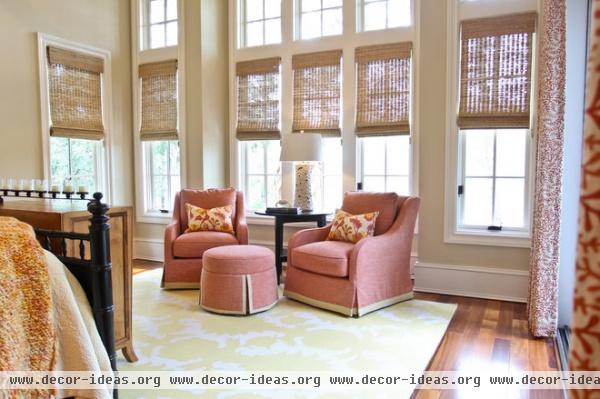
Partial coverage. Cut costs by using window coverings only where needed. If you love to wake up to the morning sun but need some privacy, install window treatments only on the lower portion. Here a double-high wall of blinds would have been visually overwhelming.
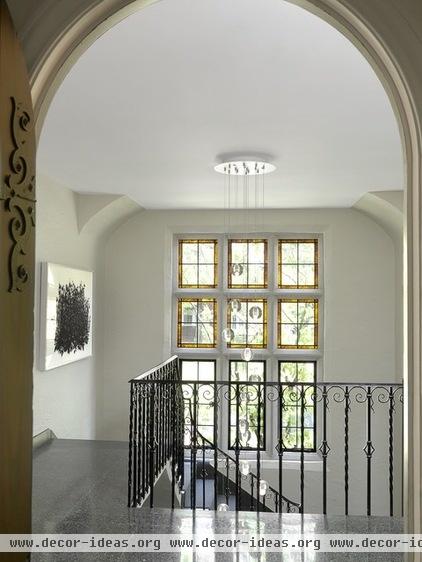
No coverage. If you have extra-high windows in a transition area, like this stairway, consider leaving them bare. Add a detail like stained glass, lead work or an arrangement of windows for variety without blocking the view.
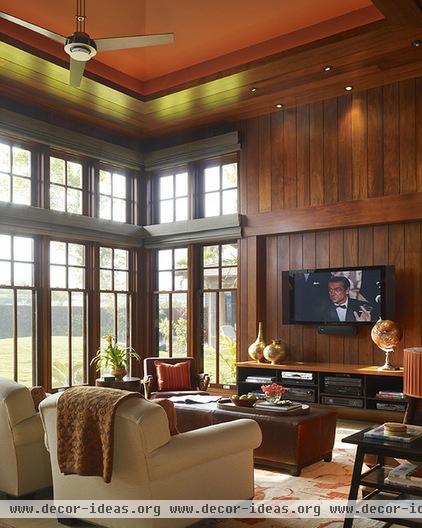
A multilevel solution. Do you require complete room darkening only occasionally? Install blinds or shades on the upper and lower portions separately to control light wherever and whenever needed.
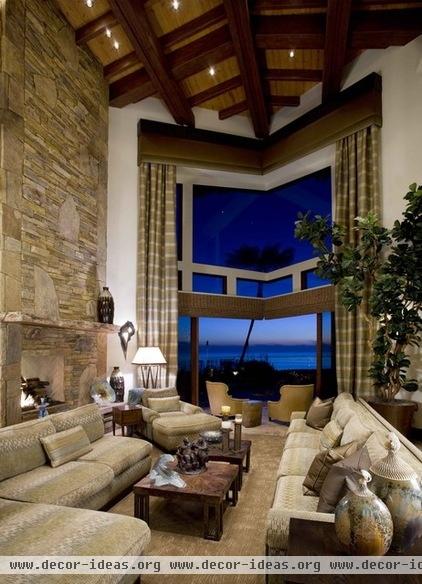
Mixing strategies. Here a box valance unites functional drapery panels that run the full height of the windows. Meanwhile, woven blinds offer shade for the lower half. This combo allows for a flexible decorating approach as well as a two-part strategy for controlling light.
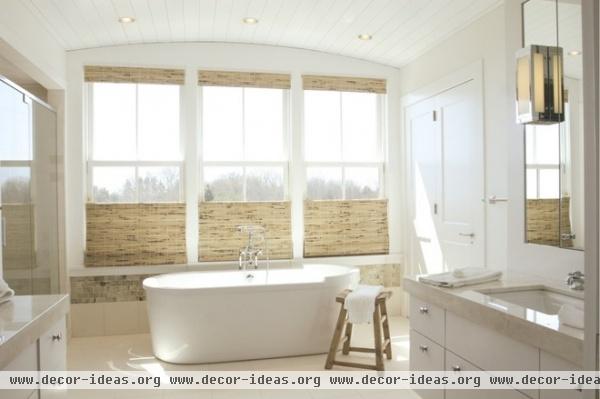
An up-down solution. Versatile window coverings like these are well suited for tall windows, because they allow you to block or invite sunlight into a room depending on how low or high the sun is in the sky.

Adding drama. On a wall this high, upper windows can look like a lonely add-on. Sheer panels loosely tied back will provide a counterpoint to the hard edges. The best part: They won't break the bank.
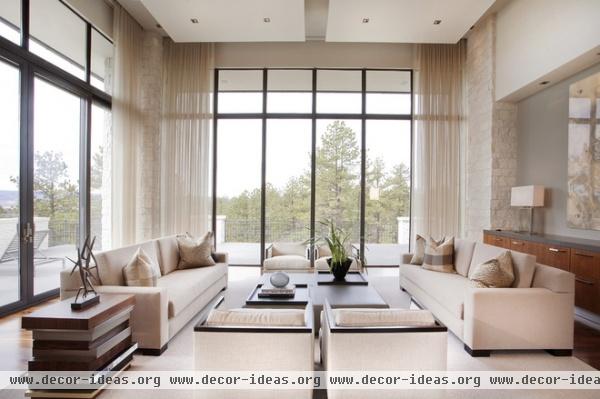
Enhancing a linear look. Notice how a ceiling cove conceals the drapery hardware here. This is a great architectural treatment you can use if you have high windows. The absence of fuss at the top allows the eye to focus on the lower half.
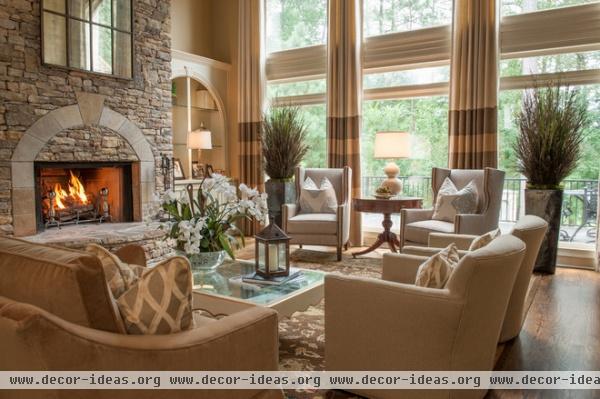
Bringing the attention down. High windows can make a space feel cavernous. Adding detailing in a contrasting fabric that relates to the lower part of the room can help bring the focus down and make things cozier.
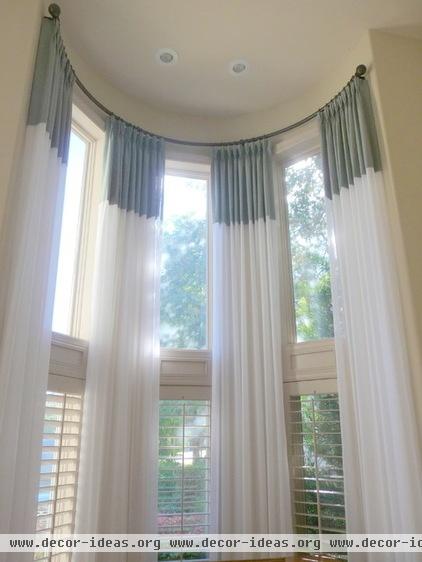
Sending the attention up. For a dramatic effect that celebrates height, go in the opposite direction: Send the dressed-up detailing to the top.
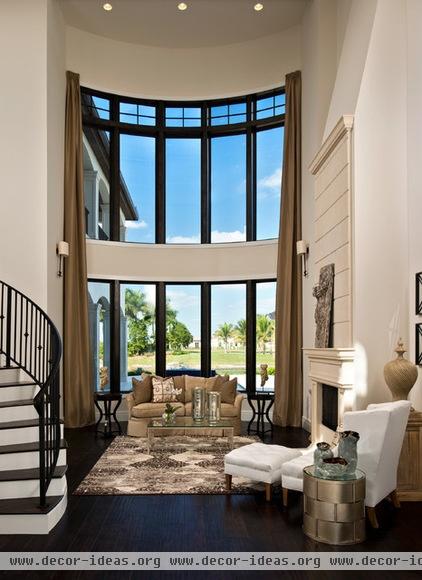
Using UV window film. If you really don't want coverage but find the room too bright, UV film is a great option. It acts like sunglasses for your windows, cutting down on glare. It enhances thermal properties and protects your furnishings from fading and deterioration. Silk, for example, is susceptible to sun rot. UV window film helps protect silk drapes.
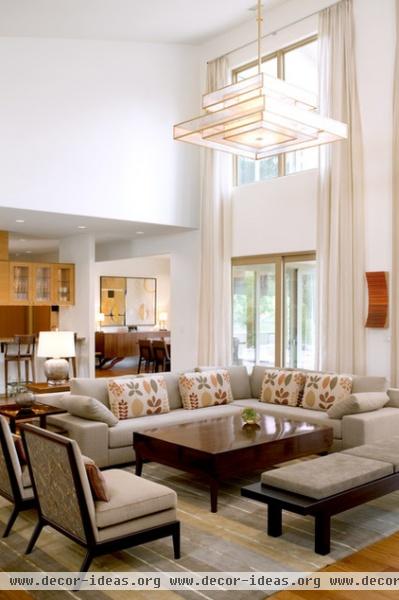
Placement. A good rule of thumb when you have high windows and no crown molding is to place the drapery rod halfway between the upper edge of the window and the ceiling.

When there is crown molding, I like to place the rod below the molding, leaving 1 to 2 inches between the top of the rod and the bottom of the molding. Doing this can emphasize the height a bit. If you want to downplay that, bring the rod down to the top of the windows.
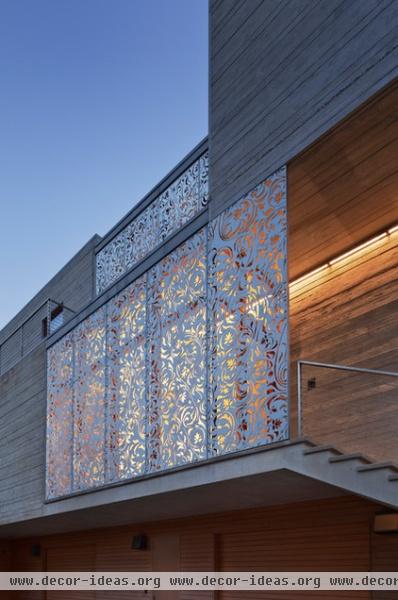
Think outside the window. Sometimes the solution lies outside. Use conventional awnings, shutters or a filtering screen like this one to reduce light intrusion.
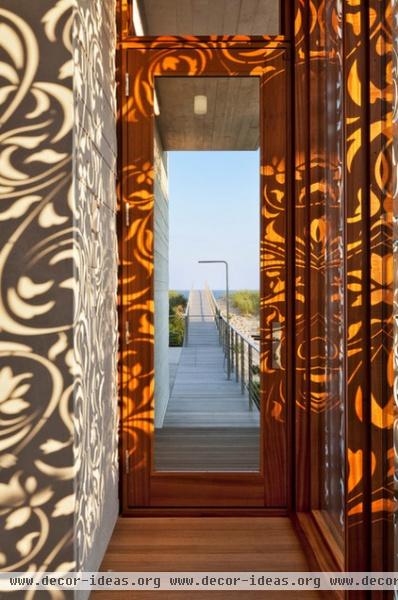
An ornamental filter screen has another benefit: It creates a stunning pattern of light inside the home.
Related Articles Recommended












